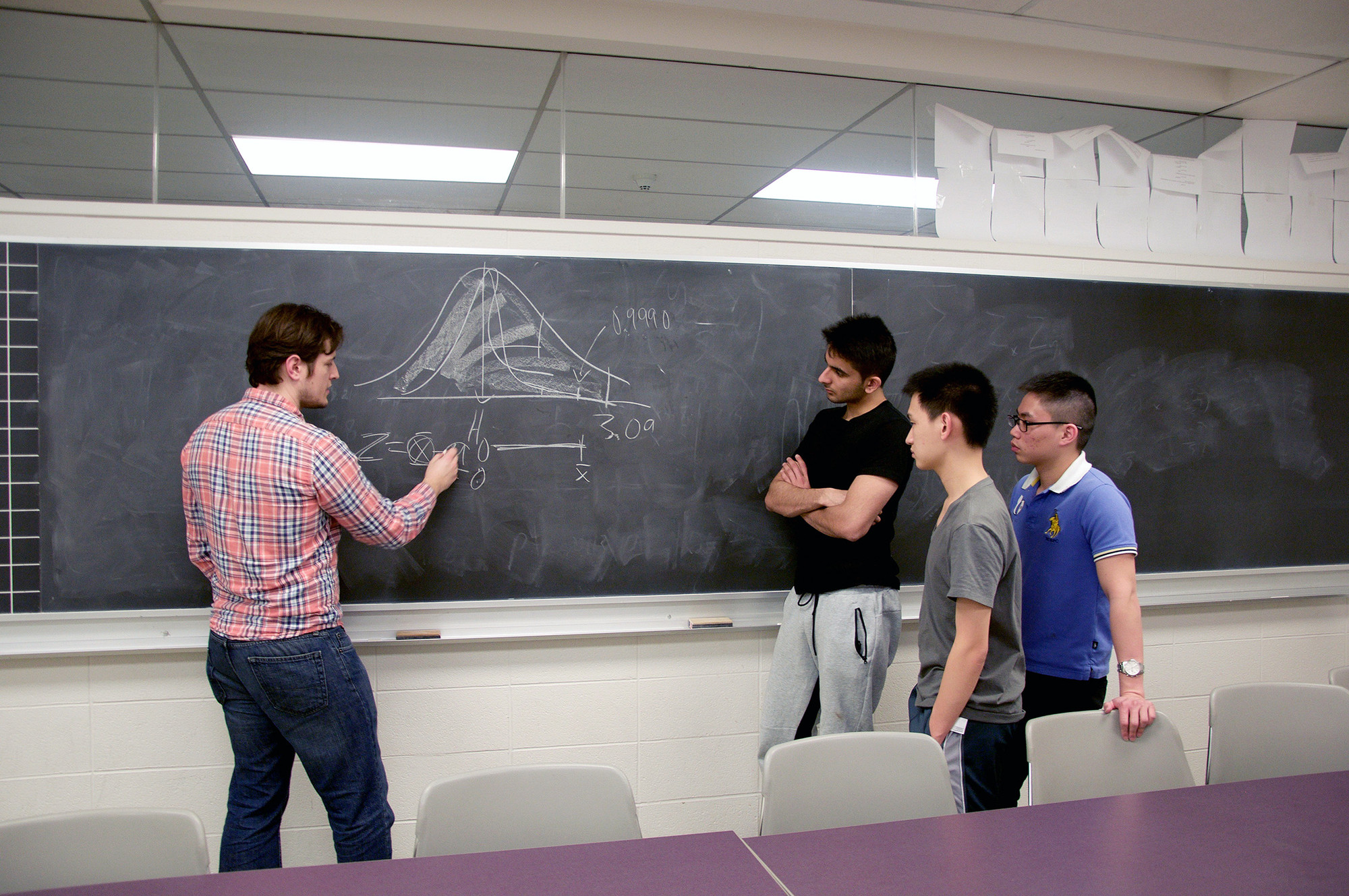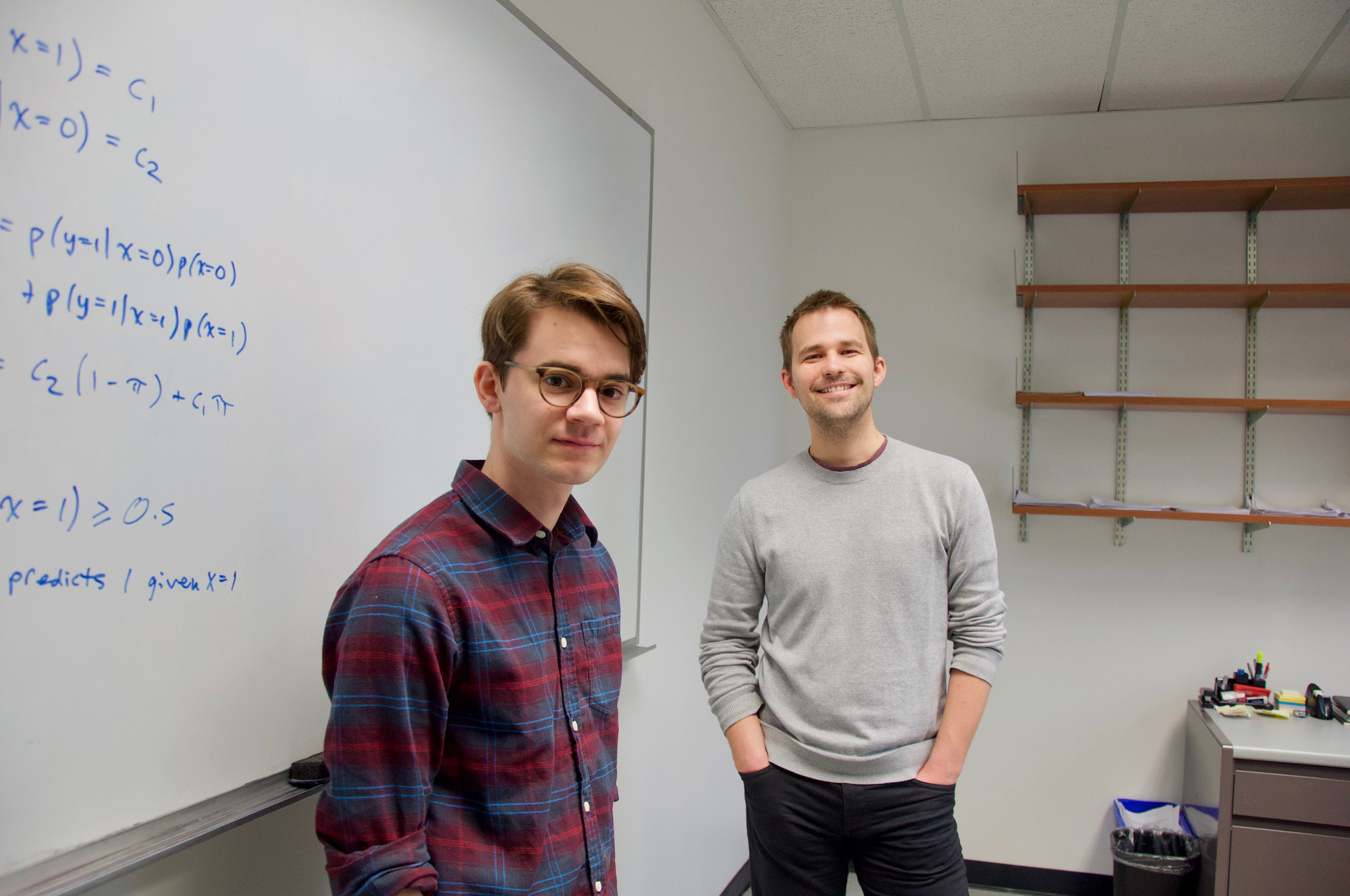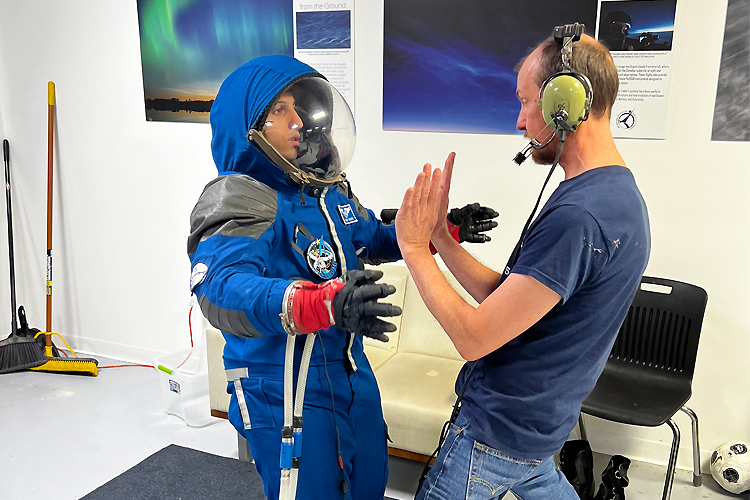
Students in mathematical and physical sciences investigate the natural laws and processes of non-living matter. From the high-tech world of quantum optics and biophysics to the intricate problems of black holes and chaotic dynamics, our programs will introduce you to the research and issues that impact the world around us.
Mathematical & Physical Sciences Programs
Applying to Mathematical & Physical Sciences
OUAC Admission Code: TPG (Mathematical & Physical Sciences)
Supplementary Application Form Required: No
Admission Category Prerequisites: English and Calculus
Approximate Admission Range: Mid to high 80s
Admission Requirements by Curriculum:
- Ontario High School and Other Canadian Provinces
- US High School Admission Requirements
- International Baccalaureate (IB) Admission Requirements
- British Patterned Admission Requirements
- Caribbean Advanced Proficiency Examination (CAPE) Admission Requirements
- Other International School Admission Requirements
It is important to note that in addition to the courses required for admission into the Mathematical & Physical Sciences admission category listed above (English and mathematics/calculus), some programs of study may require you to take additional specific high school subjects in order to take specific courses in first year, or for entry into that program in second year.
For example, if you are interested in astronomy and physics, you will not only need English and mathematics/calculus (which are required for admission into Mathematical & Physical Sciences), but you will also need grade 12 physics or equivalent to be able to enrol in this program.
Since you are admitted to the general Mathematical & Physical Sciences admission category, during your first year you will not be enrolled in a specific program of study. This means that during your first year, you are able to explore a number of different areas of study. You apply to a program (e.g. major in astronomy and physics) at the end of your first year, and can combine programs outside of your own admission category, excluding programs in Rotman Commerce.
To prepare for admission into your program of study at the end of first year:
Step 1: Search for your desired program of study (e.g. major in astronomy and physics) in the table in the "Mathematical & Physical Sciences (H.B.Sc.)" section below
Step 2: Find the high school subject prerequisites for your desired program of study listed under Subject(s) Required in Addition to English
Step 3: These prerequisites subjects allow you to enrol in introductory first year courses needed for your program of study selection at the end of first year. You can find these courses listed under Program Area in the Academic Calendar
Program List
Whether you're a math whiz or a science enthusiast – or a little bit of both – discover the program of study that's right for you from the list below.
Legend:
Bio: Biology; C: Calculus; Ch: Chemistry; Ph: Physics
Rec.: Recommended but not required
| Program | Subject(s) Required in Addition to English |
|---|---|
| Actuarial Science | C |
| Applied Mathematics | C (Rec. Ph) |
| Astronomy and Astrophysics | C (Rec. Ph) |
| Astronomy and Physics | C, Ph |
| Chemical Physics | C, Ch (Rec. Ph) |
| Chemistry | C, Ch (Rec. Ph) |
| Cognitive Science | C |
| Earth and Environmental Systems | C, Ch (Rec. Ph, Bio) |
| Economics and Mathematics | C |
| Financial Economics | C |
| Geology | C, Ch (Rec. Ph, Bio) |
| Geophysics | C, Ch, Ph |
| Geoscience | C, Ch (Rec. Ph, Bio) |
| Materials Science | C, Bio, Ch, Ph |
| Mathematical Applications in Economics and Finance | C |
| Mathematics | C |
| Mathematics and Its Applications: Physical Science | C, Ph |
| Mathematics and Its Applications: Probability/Statistics | C |
| Mathematics and Its Applications: Teaching | C |
| Mathematics and Philosophy | C |
| Mathematics and Physics | C, Ph |
| Physics | C, Ph |
| Physics and Philosophy | C, Ph |
| Planetary Science | C, Ch, Ph |
| Statistics | C |
| Statistical Science: Methods and Practice | C |
| Statistical Science: Theory and Methods | C |
| Synthetic and Catalytic Chemistry | C, Ch (Rec. Ph) |
Why Study Mathematical & Physical Sciences at Arts & Science?

Learn from the Best in Canada
Home to the Fields Institute, an international centre for math research, we have the top mathematics department in Canada. With award-winning faculty like Professor Alison Gibbs, a 3M National Teaching Fellow, you'll be learning from some of the best instructors in Canada.

Unique Learning Opportunities
Students can gain hands-on experience in our world-class facilities, including our state-of-the-art labs and astronomy observatory. Beyond the classroom, you'll have access to research opportunities inside and beyond the classroom through programs like the Summer Undergraduate Research Program and the Research Opportunities Program. Eligible students will also have the chance to gain 12-20 months of paid work experience and specialized professional development training through the Arts & Science Internship Program.
Mathematical & Physical Sciences Careers
#1 in Canada for graduate employability — recruiters from top companies have consistently ranked U of T as #1 in Canada and among the best in the world at preparing its students for the workplace. With a science degree from a world-renowned university, you will have a competitive advantage when applying for jobs in fields such as:
- Actuarial science
- Conservation
- Energy sector
- Financial services
- Healthcare services
- Information technology
- Insurance
- Project management
- Research
- Software development
Use Career Navigator to explore more careers in the mathematical and physical sciences.
From exploring space to developing innovative tech solutions and medical treatments, Arts & Science alumni are making an impact. Read some of their stories below.
You have to understand how things work together, how to communicate them in a way that people can understand and how to get results. That's what you do in physics — you get a problem and use tools to solve it. Where I am today is largely because of my physics background. — Julius Lindsay, BSc 2006







